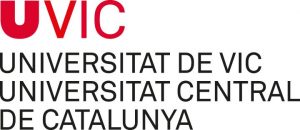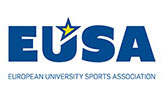An article by Christian Red, published in the New York Daily News on 22nd October, reports on a letter sent by California attorney Bob Allard to lawyers representing USA Swimming. Allard is representing adults who were sexually abused by a coach or others in positions of trust within youth swimming. He was apparently outraged when he saw a statement from Chuck Weilgus, USA Swimming’s executive director since 1997, criticising the much-publicised antics of 12-time Olympic medallist Ryan Lochte at the Rio Olympic Games. For Allard, Weilgus is in no position to take the moral high ground.
Allard’s argument is that the senior administration of US Swimming have utterly failed to safeguard the welfare of the young athletes in their care or to prioritise the interests of adults that have managed to come forward and officially report the sexual abuse they were subjected to. Red also reports that Allard attached a letter sent by a senior Democrat, George Miller, in 2014 to the Director of the FBI requesting the Bureau ‘fully investigate USA Swimming’s handling of both past and present cases of child sexual abuse’.
In our undergraduate programme at Edge Hill University, one of the first lectures I give on our ‘Safeguarding and Child Protection in Sport’ module includes a BBC TV documentary broadcast in 1993. This aired about a year after the first reports that British Olympic swim coach Paul Hickson was being investigated for sexual offenses and a few months before he absconded to France. The film is largely focused on the situation in the UK and revolves around the ground-breaking research of Professor Celia Brackenridge. However, the film also included footage from the US and an interview with John Leonard, the Executive Director of the American Swimming Coaches Association (ASCA) and still a significant individual in the swimming world (including a 2015 ASCA Hall of Fame inductee). The comments he made provide a crucial teaching point for our course, especially twenty years on when US swimming is beleaguered by many cases of child sexual abuse that have occurred over the past few decades.
Leonard forcefully states that ASCA would not permit any suspicions of sexual abuse against a coach to be officially reported by parents or athletes unless the accusation had been assessed by another coach who agreed that there were grounds for making an official report. The rationale for this was that if they did allow parents or athletes to make reports, they would be overwhelmed with false allegations against innocent coaches. In his words, ‘I would absolutely guarantee you that if we were to allow [parents or swimmers to report] we would have many more spurious accusations than we’d have factual cases’.
Such a position only increases the difficulty of speaking out about something which for many children, and adults, already feels like an impossible task. As one ‘survivor’ of child sexual abuse in sport stated in a research interview, ‘it made me so unbelievably uncomfortable that I couldn’t speak’. It was 38 years before he did so. Certainly, with each passing year since the programme aired, Leonard’s words have seemed to take on greater and greater significance as more and more victims have gradually come forward.
Allard has previously represented Kelly Currin, a swimmer who was sexually abused by Olympic swimming coach Rick Curl. Curl was sentenced to 15 years imprisonment (all but 7 suspended) in 2013. Allard stated then that ‘USA Swimming’s leaders have repeatedly demonstrated that they are utterly incapable of taking affirmative action until pressured to do so by the media and/or victim advocates. … in the sexual molestation of minor swimmers … a blind eye is perpetually turned.’ (Brittain and Trevino, 2013). According to Carl Auel, an assistant swimming coach at the University of Maryland, ‘It seemed like everyone knew [about Curl’s crimes] at Maryland, but it was something you didn’t talk about.’
When cases of child sexual abuse are reported, investigations often reveal that the abuse had been known about by others within the organisation or community. In the UK, Paul Hickson was eventually caught when he returned to England to see his wife and daughter. A photograph shown on the TV programme ‘Crimewatch’ prompted a call to police that led to his arrest. In September 1995 he received a 17-year sentence for rape and sexual assault of young female swimmers in his charge.
However, the trial revealed that whilst Hickson had coached an elite squad at Swansea University, complaints by female students (made to strip naked during fitness testing) had been made to university officials. Their response was a formal written warning and a directive that any further fitness testing with female students must be conducted with a chaperone present. Despite this, when Hickson applied for a prestigious coaching position at the fee-paying Millfield School, he was given a reference by University College Swansea which enabled him to secure the job. During the trial the Daily Mirror reported: ‘Millfield headmaster Christopher Martin said yesterday that the coach came with “impeccable references” from the university and the Amateur Swimming Association’ (Kerr & Harwood, 28.9.95). Hickson’s crimes were only revealed by chance when a child was overheard by an off-duty police officer whose daughter was also being coached by Hickson.
The Hickson case ultimately led to developments that changed the policy landscape of British sport significantly. In Canada, in the year following Hickson’s conviction, Sheldon Kennedy’s public disclosure of sexual abuse by his hockey coach Graham James was also having a seismic impact on Canadian society. Again, however, the abusive relationship was seemingly well known within hockey circles well before Kennedy found the strength to report his abuse. In his 2006 autobiography ‘Why I Didn’t Say Anything’, Kennedy writes:
“Players and coaches on other teams constantly accused me of being gay during games … I was taunted … The other coaches would shout, “Hey it’s Graham’s girlfriend!” The opposing players called me “faggot” and “Graham’s little wife” every chance they got. After news of Graham’s abuse became public, everyone in the league acted surprised, as if they’d had no idea what was going on. Well they sure had acted like they knew what was going on.” (Kennedy, 2006, pp. 89-90).
The case of Jerry Sandusky at Pennsylvania State University (PSU) in 2011 and the alleged concealment of reported abuse by officials seems to illustrate the point perfectly and the fallout from this case continues in the courts. Allegedly, Sandusky was eventually quietly moved out of the university rather than being reported for his crimes and this type of response to institutional abuse has been a major concern for child protection advocates.
Graham James, however, actually secured a coaching position for a children’s hockey team in Spain after he had served his first term in prison (approximately 1 year) and despite the fact that the club knew of his conviction.
For some these cases represent a past from which society, and sport, has moved on, especially where codes of conduct and child protection policies have been introduced. Others, such as Allard, suggest that despite so many high profile cases and new codes of conduct, ‘absolutely nothing has changed’ within the culture of some of our most powerful sports organisations.
In the UK, as our independent national inquiry into institutional child sexual abuse moves slowly forward, it seems regrettable that sport has not been specifically identified within its scope (as it was in the Australian Royal Commission into Institutional Responses to Child Sexual Abuse). This inquiry clearly offered an opportunity to undertake a much-needed forensic examination of how child sexual abuse in sport – in all its forms and diverse manifestations – has been dealt with.
A national inquiry that unapologetically targeted sport – one of the most powerful institutions in our society – could have sent a clear message to those that have been subjected to sexual abuse in British sport environments that the violations they suffered was recognised and would be treated in the same fashion as ‘survivors’ from abuse in other settings, such as the Church, education and children’s homes.
The Voices for Truth & Dignity Project (funded by the European Union) explicitly acknowledges sexual abuse in sport and is designed to support and give voice (anonymously or otherwise) to those that have suffered sexual harassment, abuse and exploitation, including sexual violence of a homophobic nature, in sport settings. The aim is to provide an international platform from which to learn from victims/survivors of abuse in sport in ways that can assist prevention and safeguarding efforts.
VOICE is supported by the NWG Network (who host the new child sexual exploitation national response unit) as well as many other victim-support and sport agencies across Europe. NWG have a community awareness campaign called ‘Say Something if you See Something’; and also a ‘Say Something’ campaign developed for young people by young people.
The cases that have emerged across the globe have shown that in sport, when it comes to sexual violations against children, the unofficial policy has been to say nothing. In the case of the American Swimming Coaches Association, the position of not believing victims (or those closest to them) was publically stated by those at the highest level of swimming. Regrettably, it is certain that it was not alone in taking this position and many more sports organisations across the globe would do well to initiate their own forensic assessment of their policies and procedures, including how they have responded to past allegations and how they now support victims that do feel able to report.
Dr Mike Hartill is co-lead on the VOICE project and Reader in the Sociology of Sport at Edge Hill University (Lancashire, England). He has recently published Sexual Abuse in Youth Sport and co-edited Safeguarding, Child Protection and Abuse in Sport.















